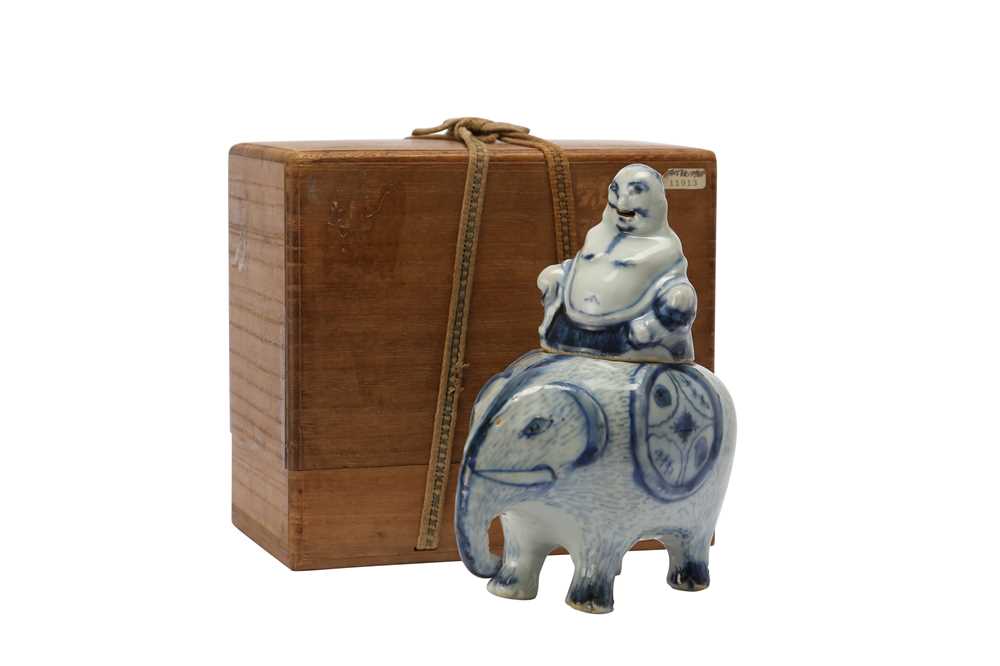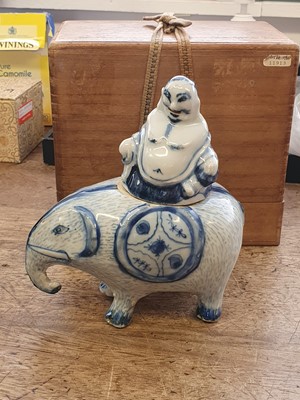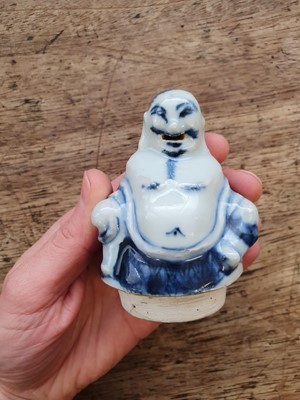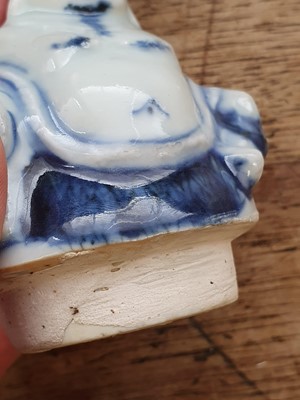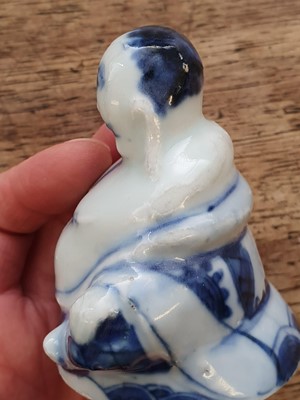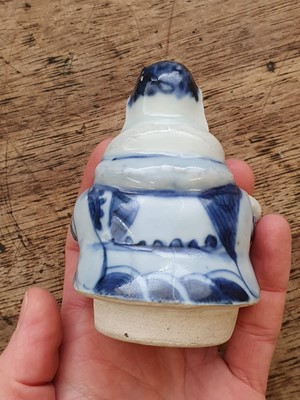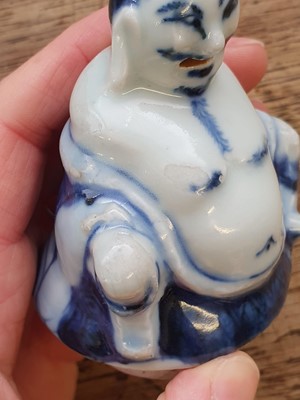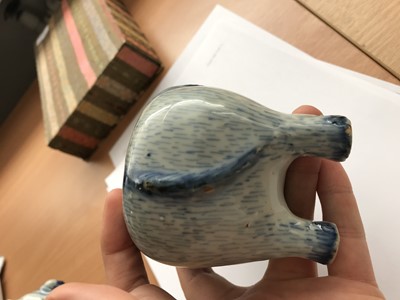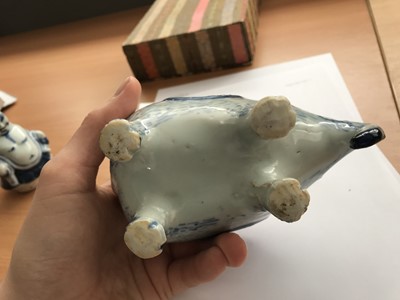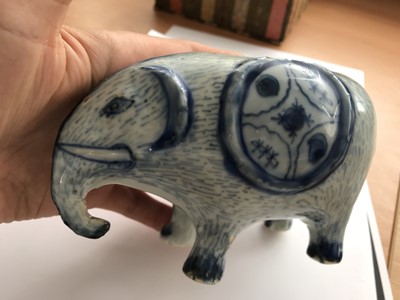1st Jun, 2021 10:00
Chinese Art: 100 Stories
A RARE CHINESE BLUE AND WHITE KOSOMETSUKE ELEPHANT-FORM INCENSE BURNER.
A RARE CHINESE BLUE AND WHITE KOSOMETSUKE ELEPHANT-FORM INCENSE BURNER.
Ming Dynasty, early 17th Century.
The hollowed base of the censer formed as a small elephant standing four-square with eyes set in an expression of concentration, on short waisted feet, the rounded body set on either side with a stylised cash coin, the edges encircled with a raised band, the body painted with fur from the hooked trunk to the tail, the latter two body parts modelled in slight relief, the cover set into an aperture on the creature’s back, held in place by a deep flange above which is modelled a charming figure of a seated Buddha, the bare chest with a liberal coating of body hair, the chin set back and eyes raised with the mouth open in a quizzical grin for the release of smoke, the long flowing robes decorated with various patterns, together with an old Japanese wood box, 16.5cm H. (3)
明十七世紀早期 青花(古染付)人騎象形香爐連日本木盒
This censer would have had a function within the Japanese tea ceremony, see another example in the Umezawa collection in Japan. Produced for the Japanese market between 1620 to 1645 it is one of a group of ceramics known as ko-sometsuke (old blue and white).
The iconography of the form is highly unusual. The white elephant is traditionally associated with Samantabhadra, the virtuous protector of the Buddhist law, symbolic of the strength achieved through the practice of Buddhism, however the figure brings to mind Maitreya, the form of Buddha associated with happiness and contentment. The censer is exceptionally rare within another being recorded from the Umezawa collection, published in the Umezawa Gallery, Summer Exhibition, Tokyo, 1968, no. 31.
The playful juxta-positioning is brought to mind by a related incense burner in the form of a rather corpulent Liu Hai on the back of a three-legged toad appears in the same genre as the current piece and is published in Transitional Wares and their Forerunners, Hong Kong, 1981, no 138, p 171.
Other fanciful depictions of the elephant from contemporary ceramics include 'elephant' Kendis, a form illustrated by R. Krahl, Chinese Ceramics in the Topkapi Saray Museum, Istanbul, vol. II, pp. 729 and 730.
However, the theme of a figure riding an elephant has particular significance with the term qixiang (to ride an elephant) sounding similar to jixiang (good fortune).
Do you have an item similar to the item above? If so please click the link below to submit a free online valuation request through our website.
